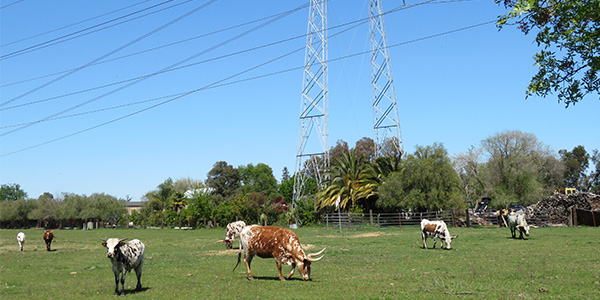FERC on Tuesday partly rejected CAISO Tariff revisions seeking deliverability enhancements for interconnection customers, saying a proposal to limit self-scheduling by some generators wasn’t reasonable. (ER20-732.)
The revisions sought by CAISO in a January filing were a response to the increasing impact of net peak demand shifting to later in the day, after solar goes offline, and a desire to avoid curtailing wind and solar resources due to transmission congestion during off-peak hours.
In particular, the ISO wanted off-peak generators to qualify for the same kinds of system enhancements traditionally given to on-peak generators to ensure resource adequacy under the RA program administered by the California Public Utilities Commission (CPUC).
As FERC noted, the CPUC’s program “determines how much resource adequacy capacity a given generator can reliably provide and assigns each generator technology a monthly ‘qualifying capacity’ based on the generation technology and expected load conditions, but without considering potential transmission constraints.” That means a conventional generator would have a qualifying capacity equal to its total capacity for all months of the year, but a solar resource’s qualifying capacity would depend on the time of year.
To account for system constraints, CAISO calculates each generator’s “net” qualifying capacity, which adjusts the CPUC’s qualifying capacity to account for the expected load and energy flows on the transmission lines a generator uses to deliver its output to consumers.
The CPUC revised its method for calculating qualifying capacity in 2018, significantly reducing the RA values for solar resources. The change also complicated the CAISO’s ability to finance the costs of transmission upgrades needed to maintain system deliverability during peak conditions at a time when solar represents about 60% of the ISO interconnection queue.
The ISO requires generators submitting interconnection requests to elect one of three statuses to indicate what portion of a resource’s output is deliverable under peak system conditions: full capacity, partial capacity or energy only. Energy-only resources are only deliverable subject to grid conditions and are not eligible to be counted as RA capacity.
Currently, CAISO conducts on-peak and off-peak deliverability assessments for generators seeking to connect to the ISO’s system, FERC explained. The on-peak assessment determines what network upgrades are needed to deliver the resource’s full output.
“However, the off-peak assessment is currently for informational purposes only because, according to CAISO, deliverability concerns principally relate to resource adequacy, and therefore peak demand,” FERC said. “Generators’ ability to deliver energy off-peak has not historically been a concern warranting developers’ financing network upgrades to relieve constraints.”
But that’s changing in CAISO as solar delivers increasing amounts of energy during off-peak hours midday. The ISO asked to create an off-peak deliverability status to identify and finance needed network upgrades and to grandfather in all generators that sought off-peak status. Those that didn’t seek that status would not be allowed to self-schedule in CAISO.
FERC accepted the ISO’s off-peak upgrades proposal.
“We find that CAISO’s proposal to identify off-peak network upgrades in the interconnection process to relieve local transmission constraints and allow generators to finance them, rather than potentially waiting years for solutions to develop in the transmission planning process, is reasonable,” FERC said. “We note that on-peak delivery network upgrades where generators choose to finance such upgrades to obtain deliverability status to provide resource adequacy are also undertaken through the interconnection process, not the transmission planning process.
“Thus, we find that it is just and reasonable to include in transmission rates the costs of off-peak upgrades to address local constraints, consistent with the inclusion of costs for on-peak upgrades that address local constraints.”
But FERC rejected the limitations on self-scheduling for generators that don’t opt in to seeking off-peak deliverability status.
“We find that CAISO has not adequately supported its proposal to give a self-scheduling benefit to interconnection customers with off-peak deliverability status, while restricting self-scheduling for other resources solely for the sake of preventing free-ridership,” FERC said. “CAISO has not justified why some interconnection customers should receive the proposed self-scheduling benefit in the energy market for upfront funding of transmission upgrades whose costs are eventually rolled into transmission rates and borne by all transmission customers, while other interconnection customers do not.”




